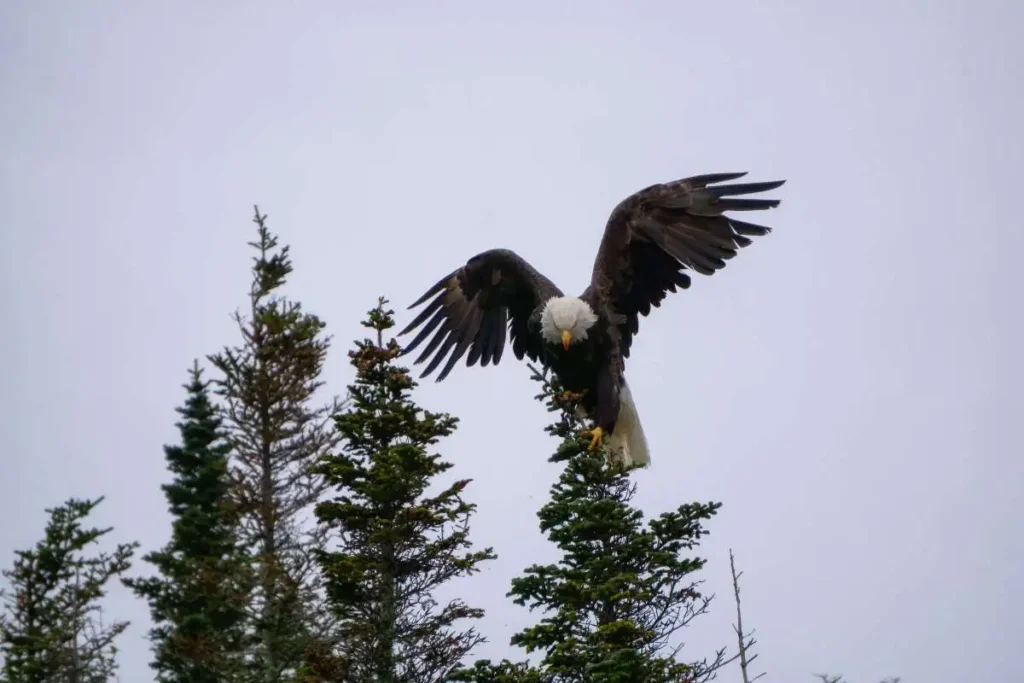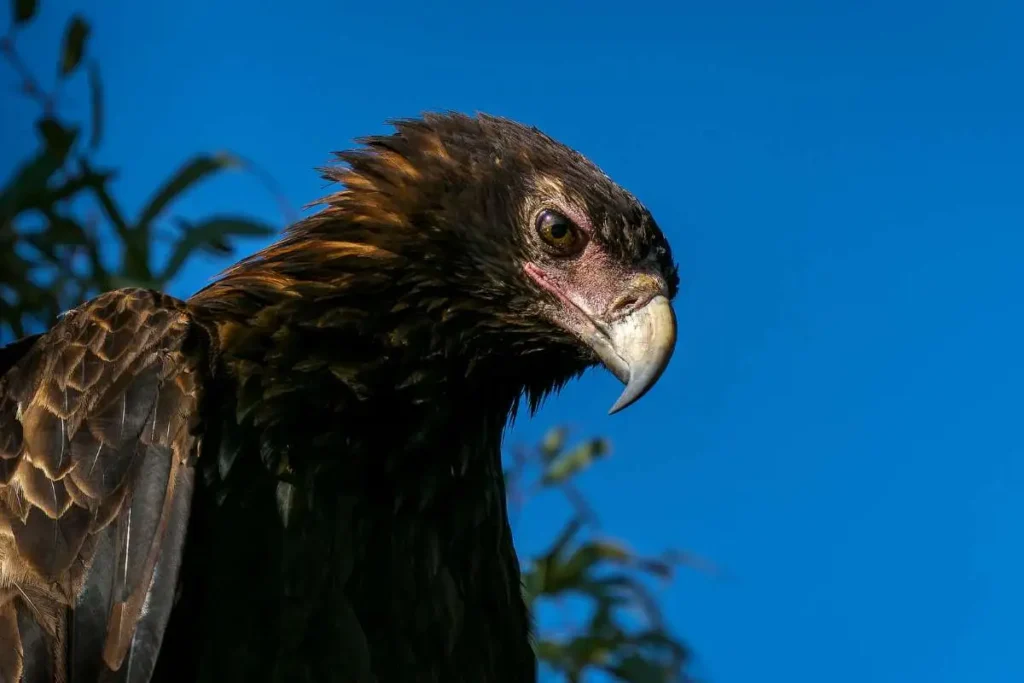
The bald eagle, an enduring symbol of strength and freedom, holds a special place in the hearts of many Americans. With its striking appearance and powerful presence, it is not just the national bird of the United States but also a species that captivates birdwatchers and nature enthusiasts worldwide. In this article, we’ll explore the fascinating world of this kind of eagle, focusing on its unique feathers, the development of young and juvenile bald eagles, and how it compares to other eagle breeds.
Table of Contents
The Bald Eagle Feather: A Marvel of Nature
One of the most distinguishing of its features is its magnificent plumage. The bald eagle feather is beautiful and serves several crucial functions. Adults are known for their striking white head and tail feathers, contrasting sharply with their dark brown body and wings. This coloration doesn’t just make it easily recognizable; it also plays a role in thermoregulation and camouflage.
Each eagle feather is meticulously designed to support the bird’s powerful flight. The feathers are lightweight yet durable, allowing for incredible hunting agility and speed. They also help it maintain its body temperature, which is essential for survival in the diverse climates the species inhabits, from the icy Alaskan wilderness to the warmer regions of the southern United States.
From Egg to Flight: The Journey of a Young Bald Eagle
The life of a young bald eagle begins in the safety of a nest, usually built high up in trees or on cliffs. The parents, often returning to the same nesting site year after year, work together to care for their eggs and, eventually, their eaglets.
When the youngs hatch, they are covered in light gray down, soon replaced by darker feathers. During the first few months of life, these young eagles, also known as juvenile bald eagles, undergo significant changes. Their wings and tail feathers grow, their muscles strengthen, and they start practicing flight. However, it takes about four to five years for a juvenile eagle to develop the iconic white head and tail feathers that signify maturity.
During this juvenile stage, they are often mistaken for other eagle breeds due to their brown and mottled appearance. Juvenile eagles lack a distinct white head and tail, which only emerge after several molts. Despite this, they are already formidable hunters, learning to catch fish and other prey under the watchful eyes of their parents.
Comparing Bald Eagles to Other Eagle Breeds
The bald eagle is part of a diverse family of birds known as eagle breeds. While all eagles share certain characteristics, such as sharp talons and keen eyesight, it stands out due to its unique habitat preferences and behavior.
For example, compared to the golden eagle, another well-known North American eagle breed, they are more frequently found near bodies of water. This is because their diet primarily consists of fish, although they are opportunistic hunters and will feed on a variety of prey, including small mammals and carrion.
Golden eagles, on the other hand, are more often found in open country, where they hunt rabbits, hares, and other small animals. These eagles are known for their impressive hunting skills, often taking down larger prey than the bald eagle typically attempts. Despite these differences, both eagle breeds share a top position in their respective food chains, playing vital roles in maintaining the balance of their ecosystems.
The Bald Eagle’s Place in History and Culture

The bald eagle has been revered by various cultures for centuries. Native American tribes saw the eagle as a messenger of the gods, and its feathers were often used in rituals and ceremonies. Today, it remains a powerful symbol of freedom and resilience, embodying the spirit of the American people.
However, its journey hasn’t been without challenges. In the mid-20th century, the species faced the threat of extinction due to habitat loss, hunting, and the widespread use of pesticides like DDT. Thanks to concerted conservation efforts, it has made a remarkable recovery and was removed from the Endangered Species list in 2007.
Celebrating the Bald Eagle
The bald eagle is more than just a bird; it’s a symbol of hope and survival. Whether you’re observing the intricate patterns of its feather, watching a young eagle take its first flight, or marveling at the maturity of a juvenile eagle, there’s no denying the awe-inspiring presence of this majestic creature.
As one of the most recognized eagle breeds in the world, the bald eagle continues to inspire and captivate those who have the privilege of witnessing it in the wild. At BirdOrbit.com, we celebrate the beauty and significance of these incredible birds, and we invite you to join us in learning more about them and advocating for their continued protection.

